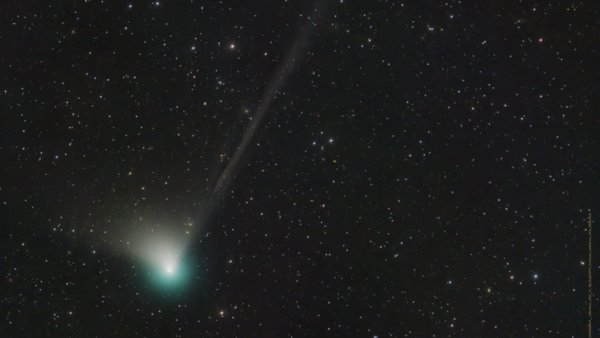
Residents of the United Arab Emirates will have the rare opportunity to witness a once-in-a-lifetime comet from the outer solar system as it makes its closest pass to Earth in 50,000 years.
Dubbed Comet 2022 E3 (ZTF), the celestial phenomenon will be visible to the naked eye and through binoculars and small telescopes from January to early February.
For all the latest headlines follow our Google News channel online or via the app.
The closest approach of the comet to Earth will be on February 1, at a distance of approximately 26 million miles, various local media reports cited Dubai Astronomy Group CEO Hasan al-Hariri as saying. Although the brightness of the comet is uncertain, al-Hariri assured that it will be viewable regardless.
The Dubai Astronomy Group (DAG) will organize a ticketed event for the rare celestial sighting at the Al Qudra Desert in Dubai on February 4.
Ticket prices for the event are as follows: General admission is AED 120 ($32), children under 13 are AED 100 ($27), and members of the Dubai Astronomy Group (DAG) can attend for AED 70 ($19). Financial aid is available for DAG member’s family members.
The event program includes an introduction, a talk on observing the comet, and observation of the comet itself. There will also be a session on Arabian Astronomy, sky mapping, and a Q&A session. Telescopes will be available throughout the evening for viewing of Jupiter, Mars, the Moon, and other deep sky objects, as well as an opportunity to take photographs of celestial objects through the telescopes.
DAG will be providing pick-up and drop-off services from the Centerpoint Metro Station for an additional fee of AED 50 ($13) per person.
The transportation schedule for February 4 is as follows: pick-up at 4:45 PM (GMT +4), departure at 5:20 PM, arrival at the event location at 6:20 PM, event start at 6:40 PM, event end at 9:30 PM, departure from the event location at 9:50 PM, and drop-off at the Centerpoint Metro Station at 10:50 PM.
Discovered by astronomers using the Zwicky Transient Facility’s wide-field survey camera in early March last year, the comet C/2022 E3 (ZTF) has been dazzling researchers with its impressive brightness.
The comet is currently making its way across the northern constellation Corona Borealis in the predawn sky, though it is still too dim to be seen without a telescope.
While it may not be visible to the naked eye just yet, recent images captured by telescopes have revealed the comet’s striking greenish coma, short dust tail, and a long, faint ion tail stretching across a 2.5-degree field of view.
As the comet continues its journey through the inner solar system, it reached its closest point to the sun, known as perihelion, on January 12, and its closest point to Earth, known as perigee, on February 1.
Though the brightness of comets can be difficult to predict, it is possible that by then C/2022 E3 (ZTF) may be visible to the naked eye in dark night skies.
Read more:
NASA’s James Webb Telescope reveals molecular, chemical origins of distant planet
In pictures: Moon turns blood-red in last total lunar eclipse until 2025
https://news.google.com/__i/rss/rd/articles/CBMihgFodHRwczovL2VuZ2xpc2guYWxhcmFiaXlhLm5ldC9saWZlLXN0eWxlLzIwMjMvMDEvMTUvUmFyZS1jb21ldC10by1saWdodC11cC1VQUUtc2tpZXMtV2hlcmUtdG8td2F0Y2gtb25jZS1pbi1hLWxpZmV0aW1lLWNlbGVzdGlhbC1ldmVudNIBigFodHRwczovL2VuZ2xpc2guYWxhcmFiaXlhLm5ldC9hbXAvbGlmZS1zdHlsZS8yMDIzLzAxLzE1L1JhcmUtY29tZXQtdG8tbGlnaHQtdXAtVUFFLXNraWVzLVdoZXJlLXRvLXdhdGNoLW9uY2UtaW4tYS1saWZldGltZS1jZWxlc3RpYWwtZXZlbnQ?oc=5
2023-01-15 07:21:00Z
1710192723
Tidak ada komentar:
Posting Komentar